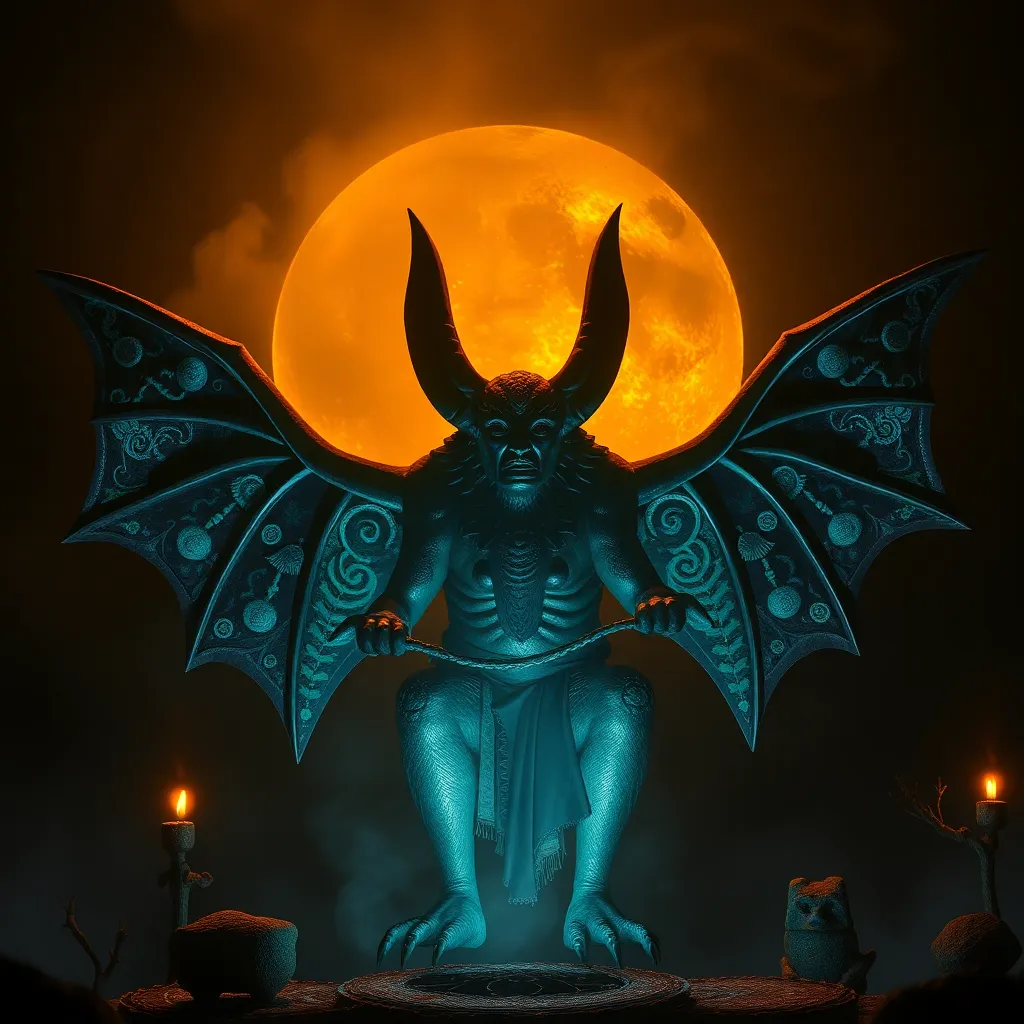The Simurgh’s Flight to the Seven Skies: A Journey Through Turkish Cosmology
I. Introduction
The Simurgh, a mythical creature rooted in Turkish mythology, embodies the essence of wisdom, healing, and the interconnectedness of nature and spirituality. This majestic bird, often depicted as a blend of avian and mammalian features, plays a crucial role in various folklore and legends throughout Turkish culture. Its journey through the Seven Skies represents a profound exploration of cosmology, reflecting the values and beliefs of the Turkish people.
The Seven Skies hold significant importance in Turkish cosmology, symbolizing different realms of existence and the spiritual journeys that beings undertake. This article aims to delve into the journey of the Simurgh, examining its implications for understanding the universe, nature, and humanity itself.
II. The Simurgh: A Mythical Creature
The Simurgh is often described as a gigantic, benevolent bird that possesses extraordinary powers. Its appearance is characterized by a radiant plumage that can change colors, often depicting shades of gold, blue, and green. The Simurgh’s head resembles that of a dog, while its claws are akin to those of a lion, symbolizing both ferocity and guardianship.
In Turkish folklore, the Simurgh plays various roles, including that of a protector and a guide to lost souls. It is frequently associated with themes of rebirth and healing, serving as a source of wisdom for those who seek its counsel. The symbolism of the Simurgh extends beyond mere mythology; it represents the aspiration for knowledge and the pursuit of spiritual enlightenment.
III. The Concept of the Seven Skies
The Seven Skies in Turkish cosmological beliefs are viewed as distinct layers of existence, each with its own characteristics and governing deities or spirits. These skies are often interpreted as realms of spiritual ascent, where souls travel in search of higher knowledge and enlightenment.
Comparatively, the concept of the Seven Skies resonates with other cultural cosmologies, such as Persian and Islamic traditions. In Persian mythology, the skies represent different levels of existence and divine realms, while in Islamic cosmology, they symbolize the stages of creation and divine order. Each sky has its own significance:
- First Sky: Associated with the material world and earthly existence.
- Second Sky: Represents the realm of spirits and elemental forces.
- Third Sky: Linked to the celestial bodies and the cosmos.
- Fourth Sky: The abode of angels and divine messengers.
- Fifth Sky: Home to the guardians of wisdom and knowledge.
- Sixth Sky: Represents the realm of dreams and visions.
- Seventh Sky: The ultimate realm of divine presence and enlightenment.
IV. The Journey of the Simurgh
The Simurgh’s flight through the Seven Skies is not merely a physical journey but a spiritual expedition marked by various stages. Each sky presents unique challenges and trials that the Simurgh must navigate, reflecting the struggles inherent in the pursuit of knowledge and enlightenment.
Throughout its journey, the Simurgh encounters:
- Guardians of each sky, who test its resolve and wisdom.
- Natural elements that invoke reflection and self-discovery.
- Visions that reveal the interconnectedness of all beings.
These challenges serve to transform the Simurgh, deepening its understanding of the cosmos and its place within it. The journey emphasizes the importance of perseverance and the pursuit of higher truths.
V. The Intersection of Nature and Spirituality
The Simurgh’s journey is intricately connected to the natural world. Each sky is filled with elements that symbolize different aspects of nature, such as:
- Mountains: Representing stability and endurance.
- Rivers: Symbolizing the flow of life and change.
- Forests: Depicting the mystery and depth of existence.
These natural elements serve as reminders of the relationship between humans and the cosmos in Turkish belief systems. The Simurgh’s flight reflects the idea that understanding nature is essential to spiritual growth and enlightenment.
VI. The Return of the Simurgh: Lessons and Revelations
Upon completing its journey through the Seven Skies, the Simurgh returns to the earthly realm with newfound wisdom. It learns valuable lessons about the nature of existence, the importance of community, and the interconnectedness of all life.
The impact of the Simurgh’s journey resonates throughout the world below, bringing forth a deeper understanding of existence and the divine. The knowledge and wisdom imparted by the Simurgh encourage humanity to seek harmony with nature and to strive for enlightenment.
VII. Contemporary Relevance of the Simurgh’s Journey
The influence of the Simurgh can be observed in modern Turkish literature and art, where its symbolism is often explored. Contemporary works reflect themes such as:
- The quest for identity and understanding in a rapidly changing world.
- The relationship between humanity and nature.
- Spiritual growth and the pursuit of knowledge.
These themes resonate deeply with current societal challenges, emphasizing the enduring legacy of the Simurgh in Turkish identity and cultural heritage.
VIII. Conclusion
In summary, the journey of the Simurgh through the Seven Skies is a profound narrative that encapsulates the essence of Turkish cosmology. It highlights the significance of wisdom, the transformative nature of challenges, and the deep connection between nature and spirituality.
As we explore the depths of Turkish mythology, we uncover lessons that remain relevant today, inviting us to reflect on our own journeys and the interconnectedness of all beings in the cosmos.



